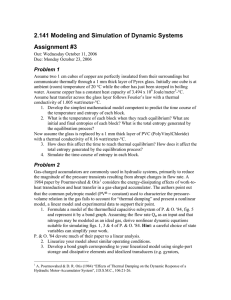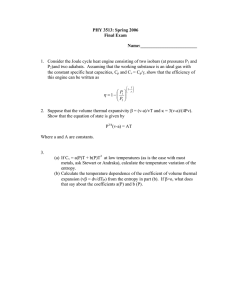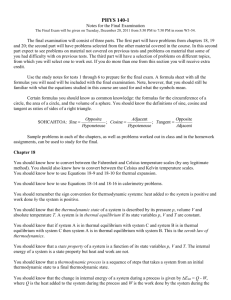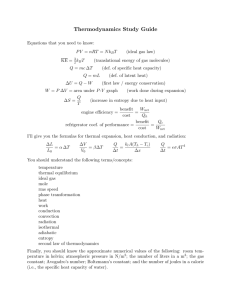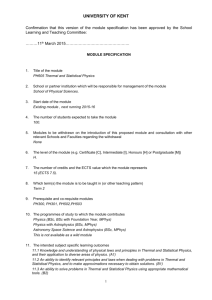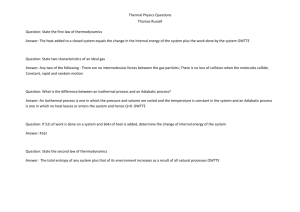Historical burdens on physics 77 Names of the ideal gas law
advertisement
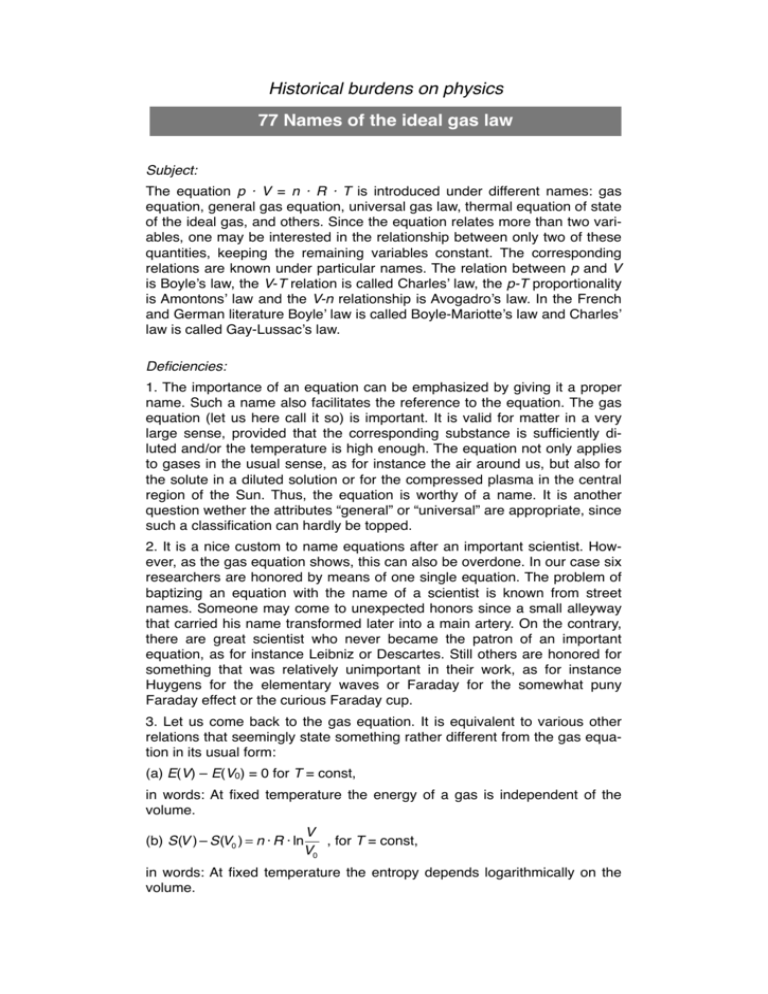
Historical burdens on physics 77 Names of the ideal gas law Subject: The equation p · V = n · R · T is introduced under different names: gas equation, general gas equation, universal gas law, thermal equation of state of the ideal gas, and others. Since the equation relates more than two variables, one may be interested in the relationship between only two of these quantities, keeping the remaining variables constant. The corresponding relations are known under particular names. The relation between p and V is Boyle’s law, the V-T relation is called Charles’ law, the p-T proportionality is Amontons’ law and the V-n relationship is Avogadro’s law. In the French and German literature Boyle’ law is called Boyle-Mariotte’s law and Charles’ law is called Gay-Lussac’s law. Deficiencies: 1. The importance of an equation can be emphasized by giving it a proper name. Such a name also facilitates the reference to the equation. The gas equation (let us here call it so) is important. It is valid for matter in a very large sense, provided that the corresponding substance is sufficiently diluted and/or the temperature is high enough. The equation not only applies to gases in the usual sense, as for instance the air around us, but also for the solute in a diluted solution or for the compressed plasma in the central region of the Sun. Thus, the equation is worthy of a name. It is another question wether the attributes “general” or “universal” are appropriate, since such a classification can hardly be topped. 2. It is a nice custom to name equations after an important scientist. However, as the gas equation shows, this can also be overdone. In our case six researchers are honored by means of one single equation. The problem of baptizing an equation with the name of a scientist is known from street names. Someone may come to unexpected honors since a small alleyway that carried his name transformed later into a main artery. On the contrary, there are great scientist who never became the patron of an important equation, as for instance Leibniz or Descartes. Still others are honored for something that was relatively unimportant in their work, as for instance Huygens for the elementary waves or Faraday for the somewhat puny Faraday effect or the curious Faraday cup. 3. Let us come back to the gas equation. It is equivalent to various other relations that seemingly state something rather different from the gas equation in its usual form: (a) E(V) – E(V0) = 0 for T = const, in words: At fixed temperature the energy of a gas is independent of the volume. V (b) S(V ) – S(V0 ) = n · R · ln , for T = const, V0 in words: At fixed temperature the entropy depends logarithmically on the volume. (c) µ(p) – µ(p0 ) = R ·T · ln p , for T = const, p0 in words: At fixed temperature the chemical potential depends logarithmically on the pressure. (From this equation one easily obtains the law of mass action and the barometric formula.) All of these three equations can be derived without any further physical input from the “gas equation”. Therefore, each of them could also be called “gas equation”, what is not done. 4. A gas is not fully described by the gas equation or “thermal equation of state”. The thermal equation of state is just one of several equations of state that are needed to completely characterize a particular gas. So it does not describe the caloric properties of an ideal gas: How does the temperature depend on the heat (entropy) content of the gas? The answer to this question is given by the “caloric equation of state”. The effects that it describes are as striking as those described by the thermal equation of state. Traditionally, at school it is considered less important, with the result that many interesting processes are disregarded in the classroom: the isentropic expansion in the steam engine and the internal combustion engine, or the decrease of the temperature with height. Origin: 1. In the usual treatment of the gas equation and various proportionalities which it contains, one can recognize the various contributions of the various epochs of its genesis. One also sees that the view from different countries is different. 2. The thermal equation of state, that contains the variables p, V and T, which are easy to measure, is overrated since the quantities entropy and chemical potential, which for many processes are more important, and, by the way are also easy to measure, never found wide acceptance. Disposal: 1. Introduce names for equations parsimoniously. In the case of the gas equation we propose not to give own names to the partial proportionalities. We recommend particular caution in the award of predicates like “general”, “universal”, “fundamental” etc. 2. If the logarithm is available, discuss the volume dependency of the entropy and the pressure dependency of the chemical potential. Treat in any case the “caloric” properties of gases, in particular the relation between temperature and volume at constant entropy, since it allows for an understanding of the working principle of the heat engine and the temperature stratification of the atmosphere. Friedrich Herrmann, Karlsruhe Institute of Technology


